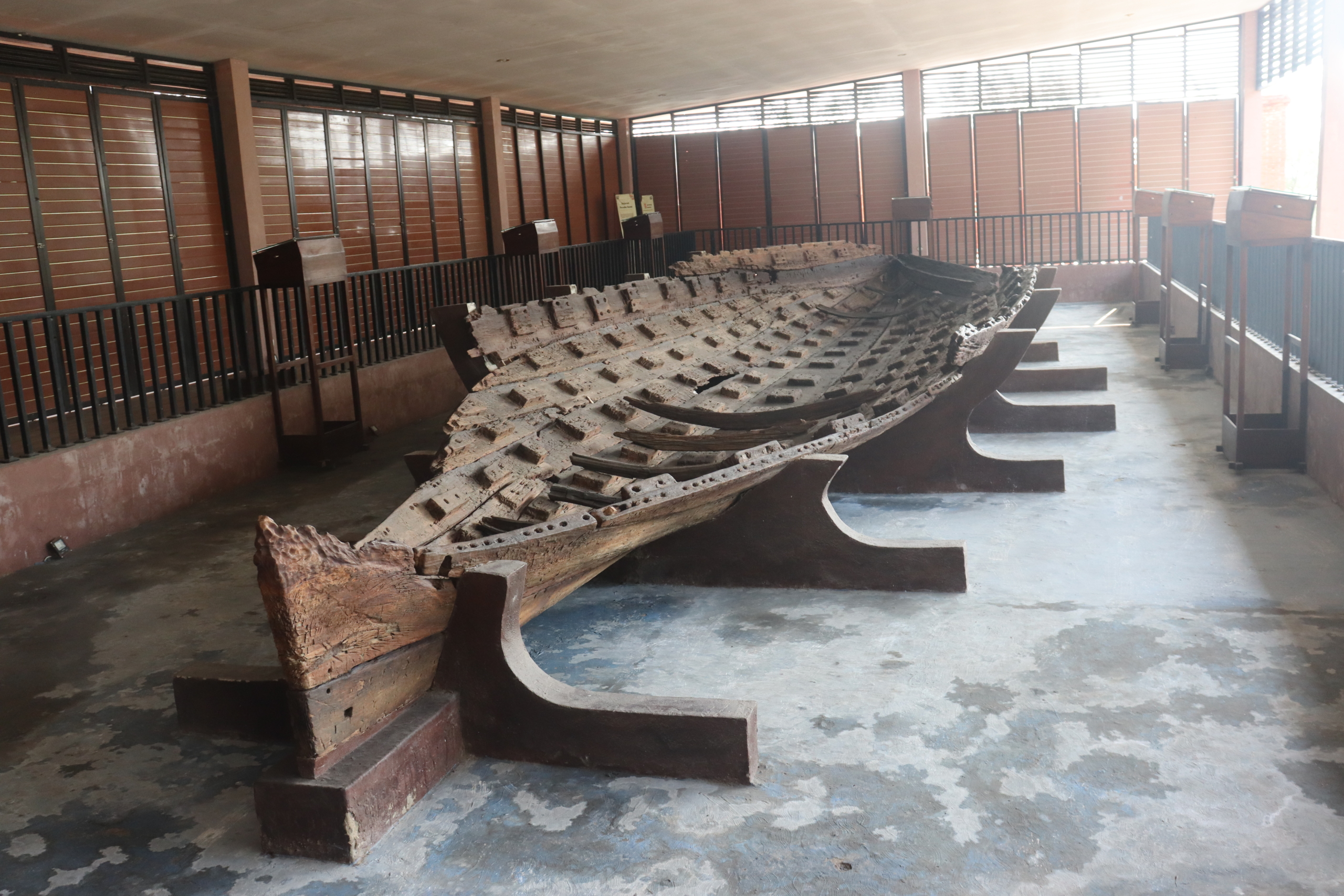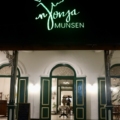Riding Motorcycle on Lasem-Rembang Highway
I didn’t want to get up when I woke up from sleep in an inn in Lasem, Central Java. After spending the whole day yesterday under the scorching sun visiting historical places with my guide, Mas Pop, my body is still resistant to coming out of bed. Besides, I had no plan yet, except to continue my journey to Semarang after checking out at noon.
I picked up my mobile phone that was lying at the end of the bed to check if there were any incoming messages that I needed to respond to. It turns out there was a message from Mas Pop. He invited me to visit his hometown: Rembang, around 13 kilometers to the west of Lasem–the tempting offer that I immediately grabbed. Right away, I replied to his message that I would be ready in about 1 hour.
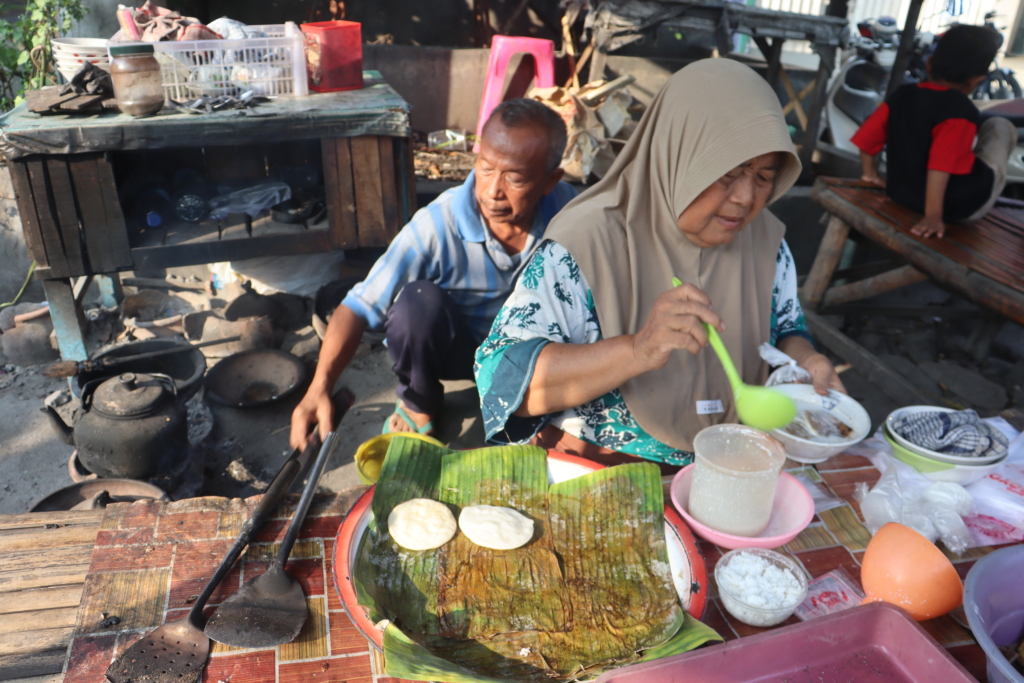
Before that, we stopped by for breakfast at a serabi cake seller that is stationed at the intersection right at the turning of Kragan-Rembang-Surabaya Main Road in Lasem. Eating two pieces of thick serabi cake made my stomach full, especially coupled with drinking sweet tea.
With a full stomach, Mas Pop immediately stepped on the gas, and the motorcycle tires sped down the North Coast highway (Pantura) which connects cities on the northern coast of Java Island. Luckily, in the morning, there weren’t many big trucks roaming around, so riding the motorcycle was quite enjoyable, especially while listening to the stories coming out of Mas Pop’s mouth about the old Tiong Hoa houses along the Pantura Lasem route. Mas Pop indeed has a good knowledge about the history of the Tiong Hoa houses around Lasem.
The view along the Pantura route from Lasem to Rembang is not just a row of shops, warehouses, or workshops, but interspersed with salt fields and fish ponds that in the morning are inhabited by white herons looking for food.
After driving for approximately 15 minutes, Mas Pop turned the steering wheel to the right to cross the highway and entered a clean-looking asphalt road. Then he turned left again through the village road where traditional houses of Rembang or Joglo Rembang stood on both sides. They looked beautiful and unique. We entered Punjulharjo Village, a tourist village in Rembang Subdistrict, Rembang Regency, Central Java.
Unexpected Discovery
The motorcycle kept moving. Mas Pop was turning off the engine when we arrived at the sign that read “Rembang Boat Site”. We reached a vast special salt marsh area where the ancient boat was first discovered.

The village of Punjulharjo became famous after an ancient boat was found in the area. On the morning of July 26, 2008, five villagers from Punjulharjo, Sudirman, Mulyadi, Masrikan, Ahmad Sulkan, and Taifuq Rohman, were digging unproductive land to be used as salt fields. While they were busy digging, suddenly their hoe hit a hard object. They continued digging and discovered pieces of wood. They suspected that the wood came from a large tree that had fallen long ago. Four people continued digging, while another looked for a buyer for the wood. When the potential buyer arrived and saw the condition of the wood, he decided not to purchase it. He suspected that the pieces were not just ordinary wood, but possibly a cultural heritage object. They then immediately reported the discovery to the village office, which then forwarded it to the relevant authorities. The story of the discovery of the ancient boat was recounted by M. Ihsan, 59 years old, the Caretaker of the Rembang Ancient Boat Site.
The diggers continued their excavation with the help of the local villagers, until a remarkably intact boat appeared. The boat that was found was relatively in complete condition, with its bow and stern intact. This differs from discoveries elsewhere, which usually only find pieces of boards or other parts of the boat. This makes the discovery of an ancient boat in Punjulharjo Village extraordinary.

M. Ihsan, who was the head of the neighborhood association at the time, was also busy when the ancient boat was found. The news of the discovery spread quickly and caused a sensation, with people from the surrounding area flocking to see the excavated ancient boat. Furthermore, some people believed that the stagnant water seeping into the boat could cure diseases. “Whether by coincidence or not, a resident who couldn’t walk due to illness tried applying the water to his legs, and the next day he could walk,” M. Ihsan recounted.
Revenue from visitor parking fees ranging between Rp 1000-Rp 2000 and from the water in the ancient boat is quite considerable in amount. “About one month after the discovery, Rp 50 million was collected,” said the man who has been the Caretaker of the Ancient Boat since 2009. “From that amount, 50 percent goes to the Village which is then distributed to the landowners, caretakers, and those who found the boat. The remaining 50 percent goes to the parking attendants,” M. Ihsan added. The influx of visitors began to decline in early September 2008.

Ancient Boat for Trading
According to M. Ihsan, the Yogyakarta Archaeological Center began serious excavations in 2009 involving archaeologists Novida Abbas and Gunadi Nitihaminoto. In collaboration with the Directorate General of Archaeology of the Ministry of Education and Culture, the Center began the conservation of ancient boats. The effort was carried out from 2011 to 2018, including extracting the water content from the boat wood. Not only Indonesian experts but also a French archaeologist, specializing in coastal regions of Southeast Asia, Pierre-Yves Manguin, also participated in the research of the boats.

The analysis of the wood showed that the boat boards came from nyatoh wood (Palaquium sp.), the long wood samples came from kulim wood (Scorodocarpus borneensis), while the wooden pegs came from eucalyptus (Melaleuca leucadendron). All these wooden trees grow in the archipelago.
The boat-building technique uses technology for connecting boards, namely the sewn-pank and lush plug techniques. In assembling the ship’s hull planks, each plank is tied or “stitched” to each other using palm fiber rope and wooden pegs to strengthen the bonds between the planks. This technology is commonly found in boat-building traditions in the islands of Southeast Asia from the early 3rd to 13th centuries AD.
Radiocarbon analysis of samples of palm fiber straps that tied the boards on the boat showed a calibration of 660-780 AD or around the 7th and 8th centuries AD. Thus, the ancient boat dates back to the 7th century AD. It was the same period as the early development of the Ancient Mataram Kingdom on Java Island and the early period of the Srivijaya Kingdom in Sumatra.
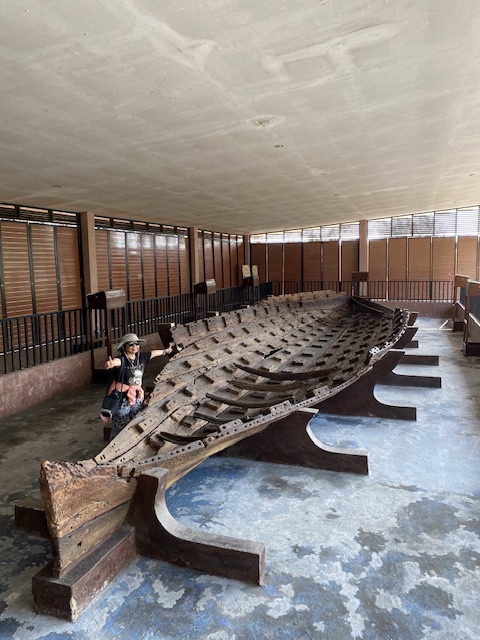
This ancient boat is thought to have been a means of transportation on water used for trading considering its quite large size, around 15 x 5 meters. With these dimensions, the boat can accommodate quite a lot of merchandise.
Keeping the Heritage of Nusantara Civilization
At the same time as the ancient boat was discovered, several fragments of pottery such as cups, pots, and bowls were also found. There are also wooden sticks and metal net pendulums, these objects were kept by M. Ihsan in cardboard boxes. If there are visitors who are interested in seeing them, he will take out the artifacts.

Luckily, there were thematic Field Study and Community Service (KKN) of students from Diponegoro University and Ivet University Semarang. Together they transformed an unused workshop house near the site into a kind of gallery that stores artifacts found from the boat excavation. M. Ihsan doesn’t need to store the artifacts in a cardboard box anymore. In this simple house, visitors can get additional information in the form of infographics equipped with bar codes about the ancient boat found.
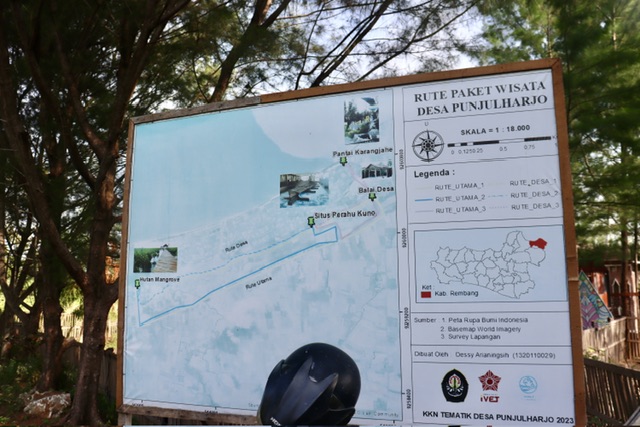
Thematic KKN of students from Diponegoro University Semarang at the Punjulharjo Village in 2022 produced signs to explain directions in the site area. The students also tidied up the nearby park revitalizing the area around the salt marsh so that it looks clean and beautiful to incite the location as a tourist area.
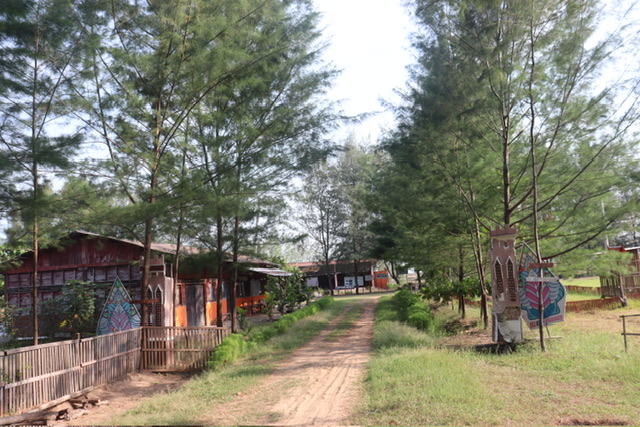
Visitors can see the ancient boat which has been conserved directly where it was found (in situ). It is the discovery of an ancient boat that is quite intact in Southeast Asia. The location itself is now a site protected by the Law on Cultural Heritage.

Location: The site of Ancient Boat Rembang, Desa Punjulharjo, Rembang District, Central Java.
